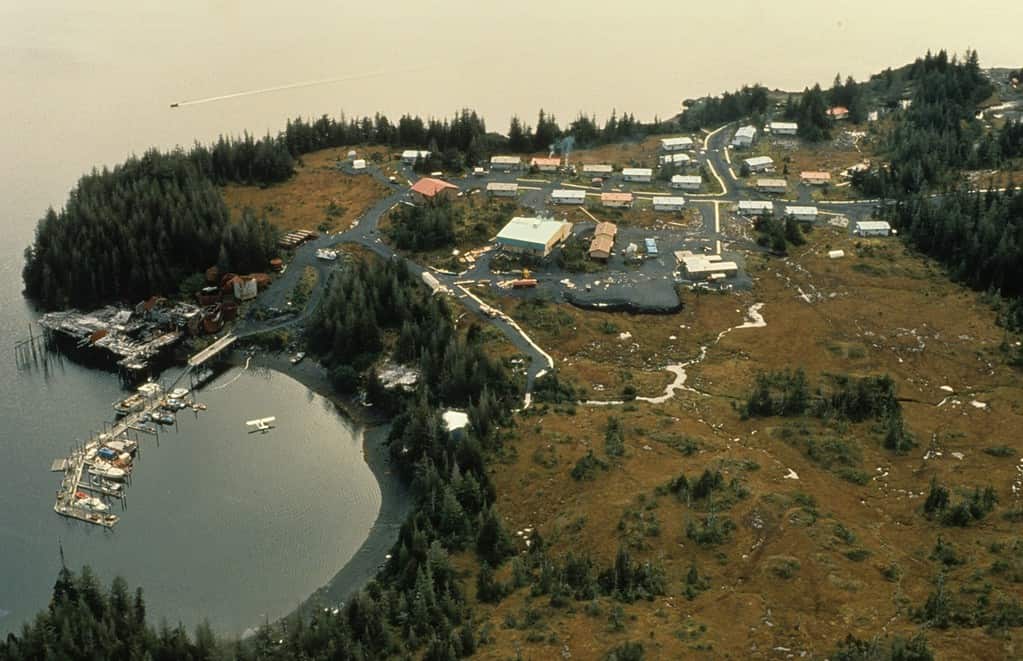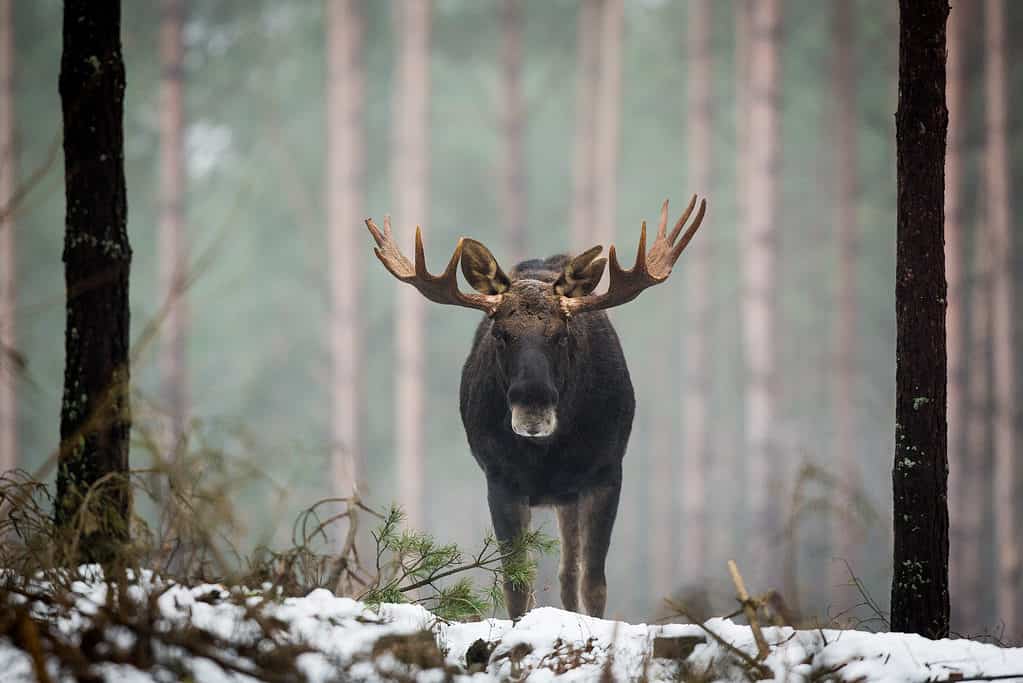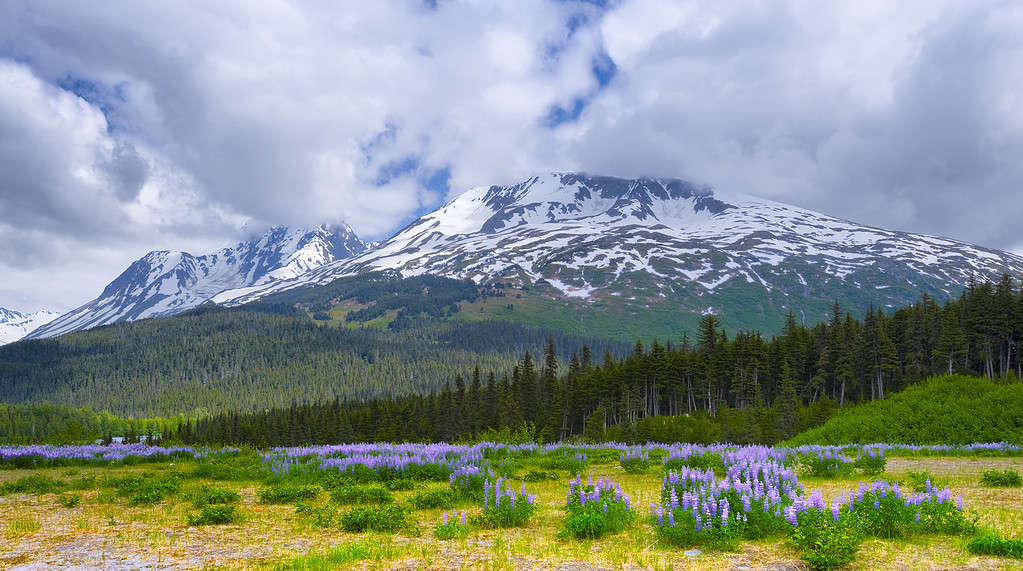Welcome to Alaska, the land of stunning landscapes, diverse wildlife, and unique weather patterns! Here, we’re about to embark on a journey to uncover the rainiest place in this incredible state. You might be surprised to learn that Alaska’s climate varies dramatically from region to region. It ranges from subarctic to maritime and even rainforest-like conditions in some areas. In fact, rainfall plays a crucial role in Alaska’s ecosystems, as it provides nourishment for both terrestrial and aquatic life. So, grab your raincoat, and let’s discover the rainiest place in Alaska!
The Rainiest Place in Alaska
Chenega is the rainiest place in Alaska, with an average annual precipitation of 121.96 inches.
This truly remarkable village has a rich history and culture! Nestled along the picturesque shores of Prince William Sound, Chenega is a hidden gem that offers stunning natural beauty and a close-knit community.
Historical Background
Like many Alaskan villages, Chenega has a rich history. Its past has been shaped by its indigenous inhabitants, as well as the influence of Russian and American settlers. The community has shown immense resilience, overcoming adversity and rebuilding itself after a devastating earthquake in 1964.
Now, let’s take a closer look at each of these historical milestones.
Origins of the Chenega Community
Chenega’s story begins with its indigenous inhabitants. The Alutiiq and Sugpiaq people have called this land home for thousands of years. Their deep connection to the land, sea, and resources around them is a testament to their resourcefulness and adaptability. The Chenega people have a long tradition of fishing, hunting, and gathering. All these skills have enabled them to thrive in the rugged Alaskan landscape.
Influence of Russian and American Settlers
The arrival of Russian explorers and fur traders in the late 1700s and early 1800s marked a significant turning point for Chenega. This period saw the integration of new ways of life, technologies, and ideas, as well as the introduction of the Russian Orthodox faith.
The United States‘ purchase of Alaska in 1867 further transformed Chenega, with American influences gradually reshaping the community.
The 1964 Good Friday Earthquake and Its Effects
Chenega faced its greatest challenge in 1964. That’s when North America’s most powerful earthquake ever recorded, the Good Friday Earthquake, hit the region. The tsunami that followed devastated the original village, tragically claiming the lives of many residents. Determined to rebuild their community, the surviving Chenega residents relocated to a new site on Evans Island. There, they established the present-day village of Chenega Bay.
Chenega’s Resilience and Recovery
In the years following the earthquake, Chenega’s residents have shown remarkable resilience and a steadfast commitment to preserving their cultural heritage. Through community-led initiatives and the support of the Chenega Corporation, the village has made significant strides in its recovery.
Today, Chenega stands as a testament to the strength and spirit of its people, who continue to cherish their past while looking toward a brighter future.

Close-up aerial view of Chenega, Alaska as it appeared in 1989.
©ARLIS Reference, Public domain, via Wikimedia Commons – License
Population
As we explore Chenega, it’s essential to consider the people who call this unique village home.
Chenega’s population stood at 59 in 2020, according to the census carried out in the same year. Today, it’s estimated at 55, with 28 males and 27 females.
Chenega’s relatively small population is a diverse and vibrant community with a blend of indigenous and non-indigenous residents. Let’s dive into the demographics, trends, and challenges facing the population of Chenega.
Demographics and Population Trends
Chenega’s population is predominantly Alaska Native, with the Alutiiq and Sugpiaq people making up a significant portion of the residents. The village has seen modest population growth over the years. More families and individuals have chosen to settle in this picturesque coastal community. Like many rural Alaskan villages, Chenega faces unique challenges regarding population growth and development. However, it also boasts a tight-knit community deeply committed to its well-being.
Indigenous and Non-Indigenous Residents
The indigenous residents of Chenega have a rich cultural heritage. They actively work to preserve it and share with future generations. At the same time, non-indigenous residents bring their own experiences and backgrounds, contributing to the village’s diversity and unique character. Together, these residents form a harmonious community that values inclusiveness and mutual respect.
Challenges Related to Population Growth and Development
As Chenega’s population grows, the village faces various challenges related to infrastructure, employment, and access to resources. Addressing these issues requires careful planning and collaboration between community members, local leaders, and the Chenega Corporation. The shared goal is to ensure that Chenega can grow sustainably while preserving its rich cultural heritage and the natural environment that supports it.
Role of Community Leadership in Addressing Population-Related Issues
Chenega’s community leaders play a vital role in addressing the challenges and opportunities that come with a growing population. They work closely with the Chenega Corporation, government agencies, and other stakeholders to develop strategies that promote sustainable growth while preserving the village’s unique character. Their efforts aim to create a thriving, resilient community that offers a high quality of life for all residents, both now and in the future.
Precipitation in the Rainiest Place of Alaska
When it comes to understanding Chenega’s unique character, it’s important to consider the local climate, particularly the precipitation patterns. In fact, rain, snow, and everything in between play a significant role in shaping the village’s ecosystem, wildlife, and even the lifestyle of its residents. Let’s delve into the various aspects of precipitation in Chenega and explore the challenges and opportunities it presents.
Overview of the Local Climate and Precipitation Patterns
Chenega’s climate can be described as subarctic maritime, which means it experiences:
- Cool summers
- Relatively mild winters
- A substantial amount of precipitation throughout the year.
Rainfall is most common during the summer months, while snow dominates the colder seasons. The village’s proximity to the ocean has a moderating effect on its temperatures and contributes to its overall moisture-rich climate.
Impact of Precipitation on the Ecosystem and Wildlife
The ample precipitation in Chenega supports a lush and diverse ecosystem teeming with life. From the dense forests to the thriving marine environment, the abundance of water plays a crucial role in sustaining plant and animal species native to the region. Precipitation also influences the seasonal availability of resources, shaping the local residents’ subsistence lifestyle centered on fishing, hunting, and gathering.
Influence of Precipitation on Local Culture and Lifestyle
The wet and sometimes unpredictable weather in Chenega has shaped the village’s culture and way of life. Residents have adapted to the climate by developing expertise in navigating both land and sea in various weather conditions. For example, traditional clothing, housing, and transportation methods reflect the influence of the local precipitation patterns. The village’s resilience in the face of weather extremes is a testament to the strength and adaptability of the Chenega people.
Challenges and Opportunities Related to Weather Extremes and Climate Change
While Chenega’s residents are no strangers to coping with a wet and variable climate, they are also aware of the challenges and opportunities that come with weather extremes and climate change. Rising temperatures and altered precipitation patterns may impact the local ecosystem, wildlife, and resources that the community relies on.
But the village is also exploring innovative ways to adapt and build resilience in the face of these challenges, ensuring a sustainable future for both its people and the environment.
Comparison of Chenega’s Precipitation with Other Alaskan Regions
Chenega’s precipitation levels are relatively high compared to other regions in Alaska. For instance, the state’s largest city, Anchorage, receives approximately 15.86 inches of precipitation annually, far less than what Chenega experiences. This difference can be attributed to Chenega’s coastal location and maritime climate, which contribute to the area’s higher moisture levels.
Animals in the Rainiest Place in Alaska
Chenega’s breathtaking landscapes are home to a remarkable array of animals, both on land and in the surrounding waters. These creatures are an essential part of the local ecosystem. They also hold great cultural and spiritual significance for the Chenega community.
Let’s dive into the fascinating world of Chenega’s animals and explore their unique characteristics, their roles in the ecosystem, and the community’s efforts to protect and preserve them.
Land-Dwelling Animals and Birds
The forests and mountains around Chenega provide the perfect habitat for a variety of land-dwelling animals and birds.
From the towering moose to the black bear and the elusive Sitka black-tailed deer, these creatures form an essential part of the village’s natural heritage.
Birdwatchers will be thrilled to find a diverse population of avian species, including the iconic bald eagle, as well as a variety of songbirds, seabirds, and migratory birds that visit the area throughout the year.

The forests and mountains around Chenega provide the perfect habitat for a variety of land-dwelling animals, including moose.
©Szczepan Klejbuk/Shutterstock.com
Marine Life and Coastal Habitats
Chenega’s coastal location and the nutrient-rich waters of Prince William Sound create the ideal conditions for a diverse range of marine life to thrive.
The area is teeming with fish species like salmon, halibut, and cod, which play a vital role in supporting the local fishing industry.
Marine mammals, such as sea otters, seals, and whales, can also be found in the waters around Chenega, making it a popular destination for wildlife enthusiasts and marine researchers.
Interactions Between Animals and the Local Ecosystem
The various animal species found in and around Chenega are an integral part of the local ecosystem. These creatures play essential roles in maintaining the food chain, dispersing seeds, and shaping the landscape in ways that benefit both the environment and the community. Understanding these interactions is key to preserving Chenega’s unique natural heritage and ensuring the long-term sustainability of the region.
Conservation Efforts and the Role of the Community
The Chenega community recognizes the importance of protecting and preserving its local animal populations. Through responsible hunting and fishing practices, the village helps maintain a balance within the ecosystem and ensures the continued survival of these precious resources. Additionally, Chenega collaborates with regional and national organizations on various conservation initiatives, working to monitor, protect, and manage local wildlife populations in a sustainable manner.
Plants in the Rainiest Place in Alaska
The diverse plant life found in and around Chenega is not only a feast for the eyes but also a crucial component of the region’s rich ecosystem. From towering trees to vibrant wildflowers and nourishing berry-producing plants, the flora of Chenega contributes to the beauty of the landscape, supports local wildlife, and offers valuable resources for the community.
Let’s explore the wonderful world of Chenega’s plants and their role in the local ecosystem.
Forest Composition and Dominant Tree Species
The forests surrounding Chenega are dominated by magnificent coniferous trees such as Sitka spruce and western hemlock, which create a lush, green canopy throughout the year.
These trees provide essential habitat for a variety of wildlife species and contribute to the overall health of the ecosystem by:
- Purifying the air
- Stabilizing the soil
- Regulating water flow
Understory Vegetation and Plant Diversity
Beneath the towering canopy of Chenega’s forests, you’ll find a diverse understory comprised of shrubs, ferns, and mosses. This understory vegetation:
- Offers additional habitat for wildlife
- Aids in preventing soil erosion
- Contributes to the overall biodiversity of the region
Among the many plant species found here are devil’s club, blueberry, and salmonberry, each with its unique characteristics and ecological roles.
Wildflowers and Berry-Producing Plants
Chenega’s landscapes are adorned with an array of colorful wildflowers during the warmer months, adding a touch of vibrant beauty to the already picturesque setting.
Some of the most common wildflowers found in the area include lupine, fireweed, and wild iris. Berry-producing plants, such as blueberries, salmonberries, and highbush cranberries, also flourish in Chenega, providing both humans and animals with a valuable source of nutrition.

Spring in Alaska’s Chugach National Forest with wild lupine blooming in the foreground of the Chugach Mountain range.
©Dee Browning/Shutterstock.com
Importance of Plant Life for the Local Ecosystem and Human Use
The plants found in Chenega play a vital role in supporting the local ecosystem and meeting the needs of the community.
In addition to providing habitat and sustenance for a wide array of wildlife, the region’s flora also offers important resources for the Chenega people.
Plants such as devil’s club have traditionally been used for medicinal purposes, while various berries are harvested and enjoyed as a seasonal treat.
Key Takeaways
As we’ve explored the many facets of Chenega, it’s clear that this Alaskan village is a truly remarkable place.
From its rich history and cultural heritage to the breathtaking landscapes and diverse plant and animal life, Chenega embodies the unique spirit and beauty of Alaska.
The village’s tight-knit community has shown incredible resilience and dedication in preserving its natural and cultural treasures, ensuring a sustainable and vibrant future for generations to come.
By embracing responsible practices in areas such as hunting, fishing, and conservation, the Chenega community is fostering a deep connection with the natural world, allowing both the environment and its inhabitants to thrive.
Where is Chenega Located on a Map?
Chenega is on Evans Island in Crab Bay amid a group of islands in the Gulf of Alaska. It is near Seward, Alaska, and 104 air miles southeast of Anchorage.
The photo featured at the top of this post is © ARLIS Reference, Public domain, via Wikimedia Commons – License / Original
Thank you for reading! Have some feedback for us? Contact the AZ Animals editorial team.






